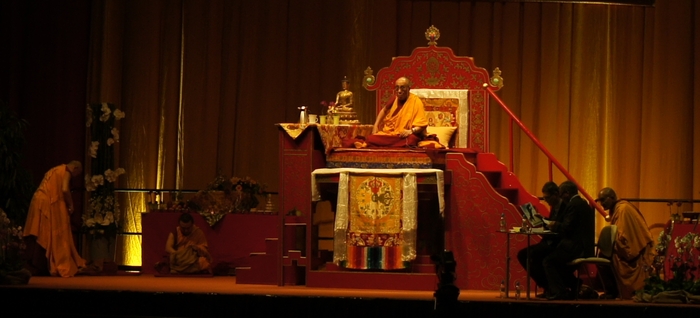
A few moments after we found our seats in the stadium, a wave of silence washed through the crowd like a ripple spreading from a drop on the stage. The Dalai Lama in his red and yellow robes climbed up the stairs and sat down.
Eric and I have long talked about what an interesting person the 14th Dalai Lama is. It's hard to say if he would be such a neat guy on his own, or if anyone who lived the life he has lived would have come out of it with some chunk of wisdom. But, when he was faced with the choice of leading his people into war or leading his people to peace, he chose peace. This, as far as I know, is something that cannot be said of any other living person. Now, Tibetan Buddhists believe in reincarnation, and so in their world the advanced age of this Dalai Lama is not a concern. Personally, though, I wanted to hear this Dalai Lama speak, and he's not getting any younger. We were out of town when he came through Amsterdam, but his itenerary for the next year or so is available online. So we looked, and found that the nearest he would be speaking was Budapest. We found a hotel/air deal which made it about as cheap as a weekend getaway can get, and a few months later, we stepped into the Budapest airport.

A few moments after we found our seats in the stadium, a wave of silence washed through the crowd like a ripple spreading from a drop on the stage. The Dalai Lama in his red and yellow robes climbed up the stairs and sat down.
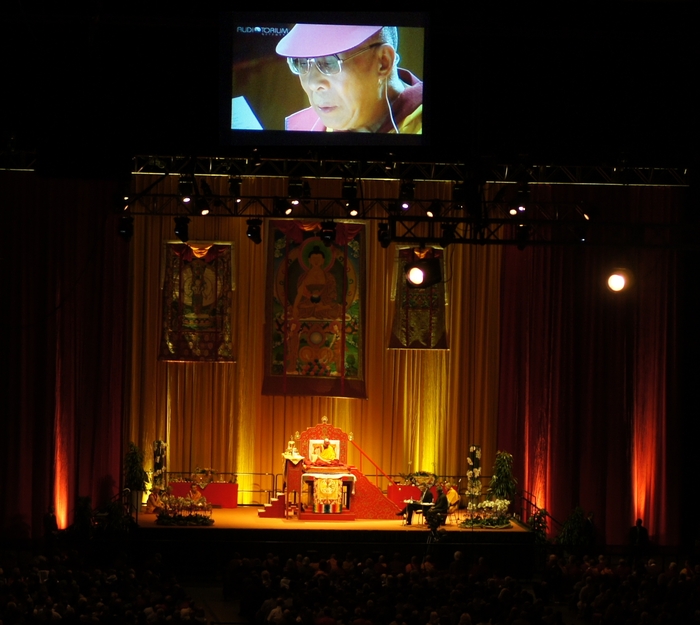
He surveyed the enormous crowd, then pulled out a pink visor and fiddled with it for a few minutes, finally settling it on his head. I don't know why he picked the pink one, perhaps he thought it was funny. But that's the way he spoke, the spiritual leader of the Tibetan people, cross-legged and with a pink visor to keep the bright lights of the stage out of his eyes.
The main subject of the talks was An introduction to Buddhism
. Among other things, he led us through a Buddhist initiation ceramony. I have the sense that initiating a stadium full of people is a bit on the unconventional side. Granted... we used rice instead of flowers. The prayers were a hurried wash of tonal Tibetan sounds, with only a very summary translation. Modern initiation,
said the Dalai Lama, for modern times.
I kept the bit of string that was part of the ceramony, the brilliant red of flags in the bitter Himalayan wind.
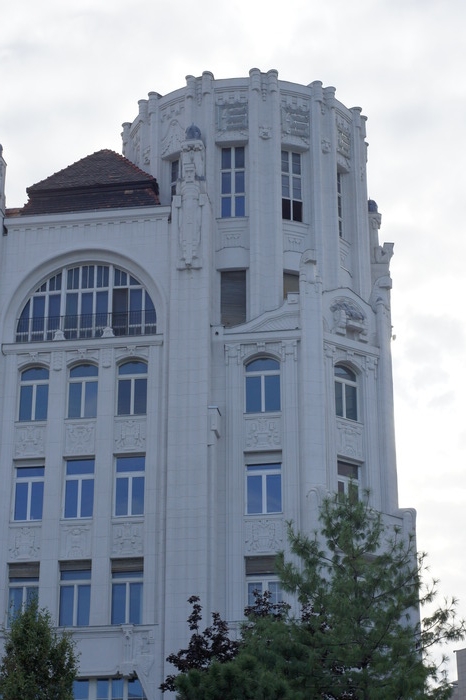
After the talks, we went out to see the city. Budapest is actually two cities: western, moutainous Buda and the eastern flood plain of Pest. In 1838 the flood plain flooded, destroying virtually everything in Pest. As a result, large parts of Pest were rebuilt in the era of Art Nouveau.
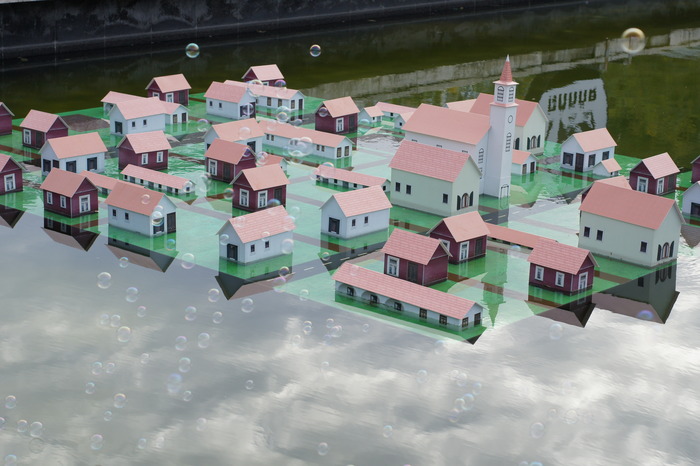
Our walk back to the hotel from the metro station brought us past this pond sculpture. The bubbles are not normally part of the sculpture, a guy happened to be blowing them just upwind.
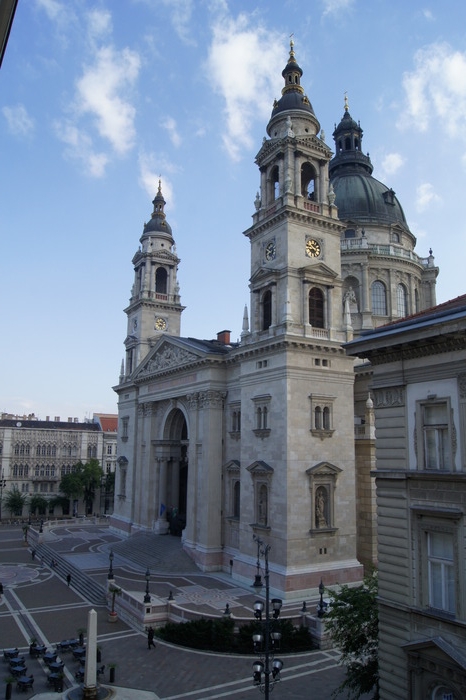
Speaking of our hotel, this is the view out our window. Not too bad, eh? This is Saint Stephen's Basilica, honoring the first king of Hungary (c 975-1038). The only down side was that the church bells started ringing at 6am.
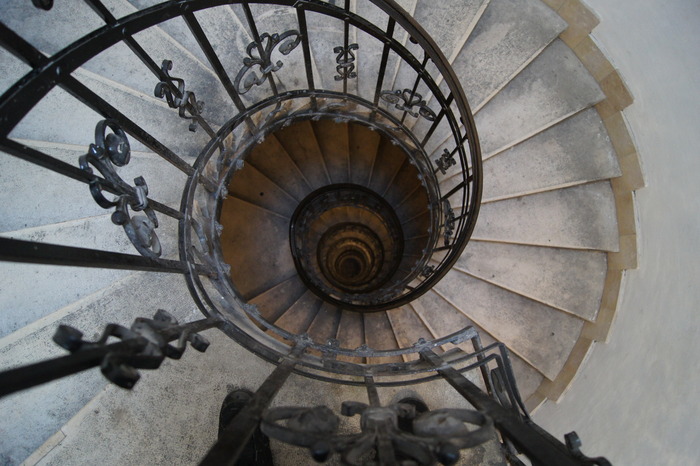
Naturally, one of the first places we went was up. Somehow I never get tired of these spiral-staircase views.
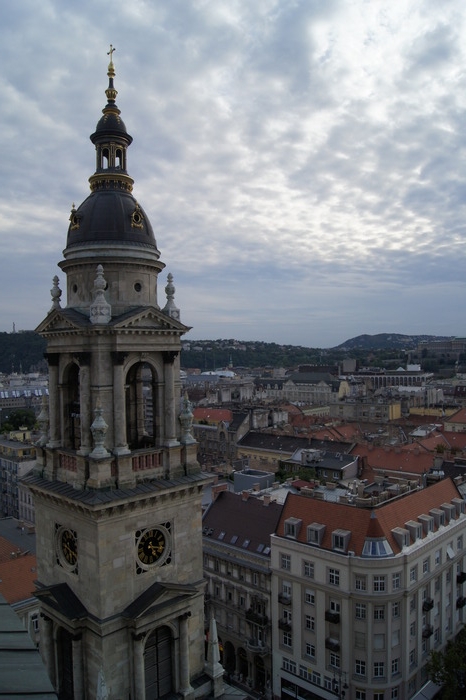
Our first look at the Buda side, with a spire of Saint Stephen in the foreground.
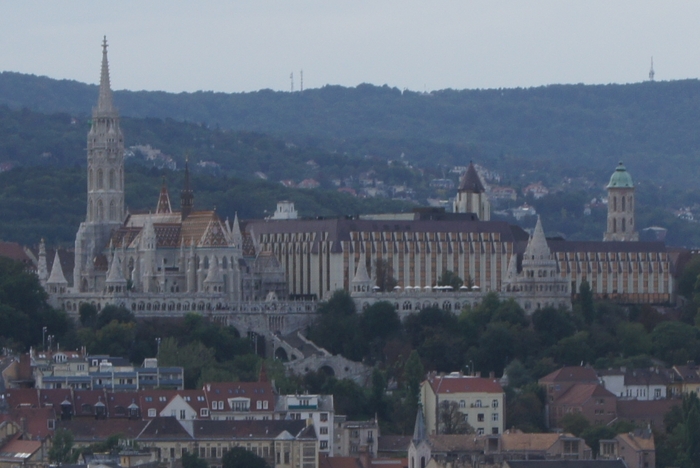
Two of the famous buildings of Buda which we did not get to see closer: Fisherman's Bastion and the Matthias church. The church is the taller part, built in the 14th century and extensively rebuilt in the 19th century. The Fisherman's Bastion is neo-Gothic, built around 1900. It is and always was simply a place to look out over the Danube. The big yellow building in the middle is the Hilton hotel, perched uncomfortably close to the historic structures.
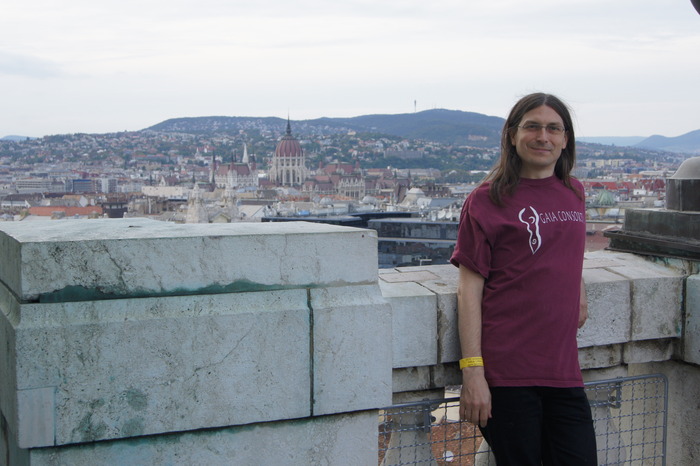
Obligatory tourist photo.
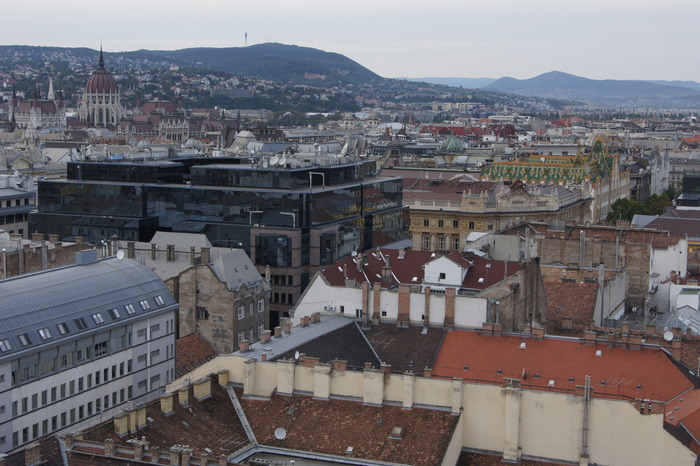
Pest in a postcard: The Hungarian Parliament Building in the background, a modern black mirroed building, and the Magyar Államkincstár (Hungarian State Treasury building). The latter is the one with the funky green roof. The Hungarian Parliament Building is another of the neo-Gothic buildings, built c. 1900.
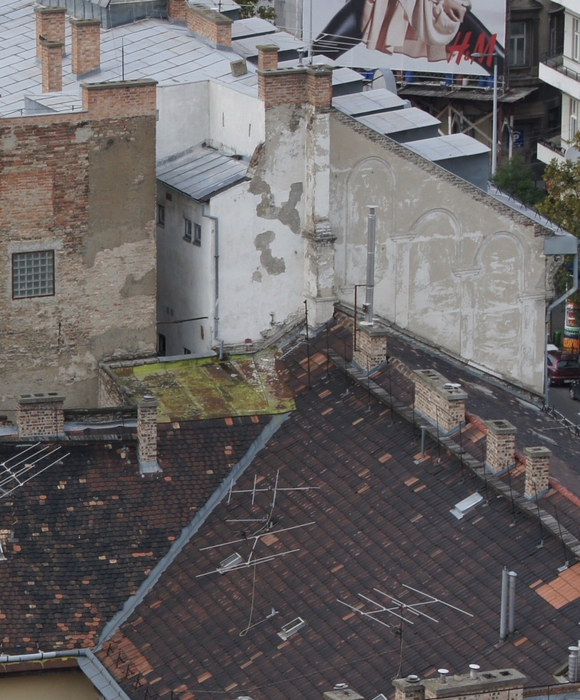
The thing that's hard to tell from a lot of these photos is that many of the beautiful buildings of Pest are in a marginal state of repair. The roof tiles are cracked and missing, there's moss and ivy overgrowing the buildings, the masonry needs tuckpointing... in many cases it looks like the work is being done, but I suspect that the world wars, followed by a Communist government from 1947-1989, took its toll on the brickwork. Following a nearly-successful revolution in 1956, Hungarians were allowed more free trade, free movement, and consequently a higher standard of living than most of the Eastern Bloc in the Cold War.
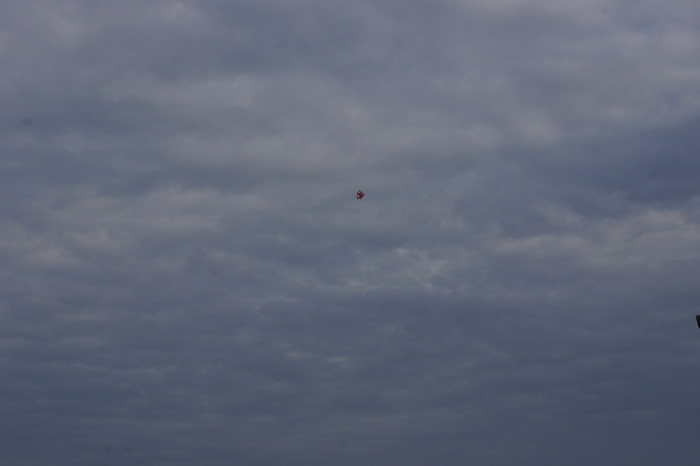
99 Kriegsminister -
Streichholz und Benzinkanister -
Hielten sich für schlaue Leute
Witterten schon fette Beute
Riefen Krieg und wollten Macht
Mann, wer hätte das gedacht
Dass es einmal soweit kommt
Wegen 99 Luftballons
99 dreams I have had
In every one a red balloon
It's all over and I'm standing pretty
In this dust that was a city
If I could find a souvenier
Just to prove the world was here
And here is a red balloon
I think of you and let it go...
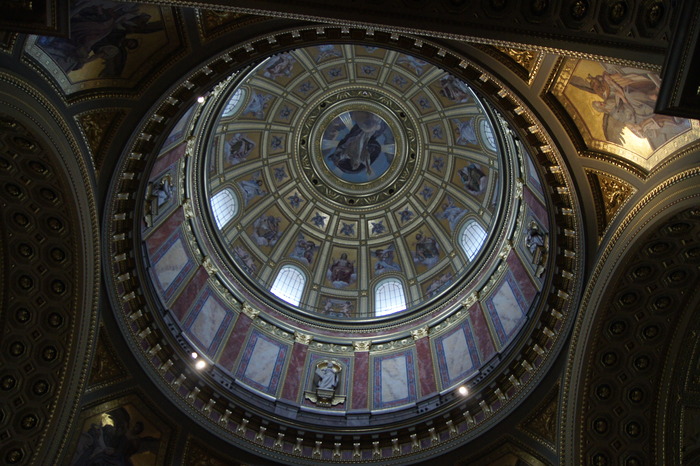
Inside Saint Stephen's.
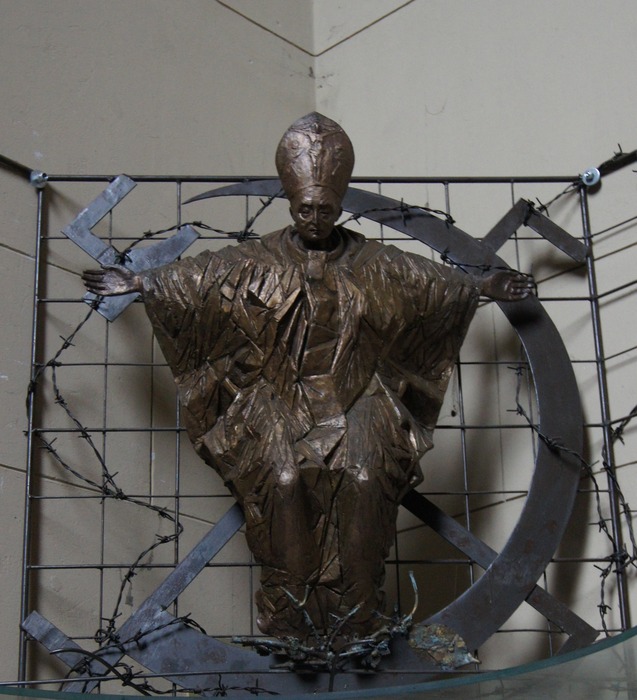
One can only imagine the symbolism behind this sculpture. Or, perhaps, it is a serving suggestion for roast Cardinal.
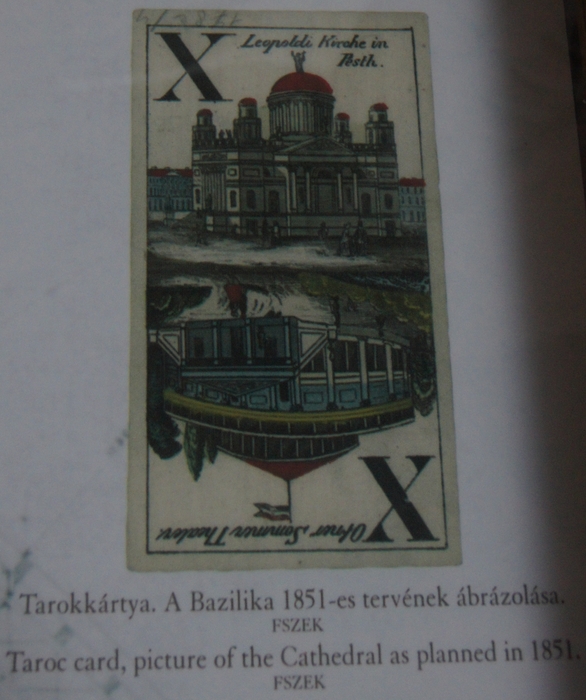
The beautiful thing about traveling is the little reminders that you are not in Kansas any more. This beautiful antique tarot card of the church is an excellent example.
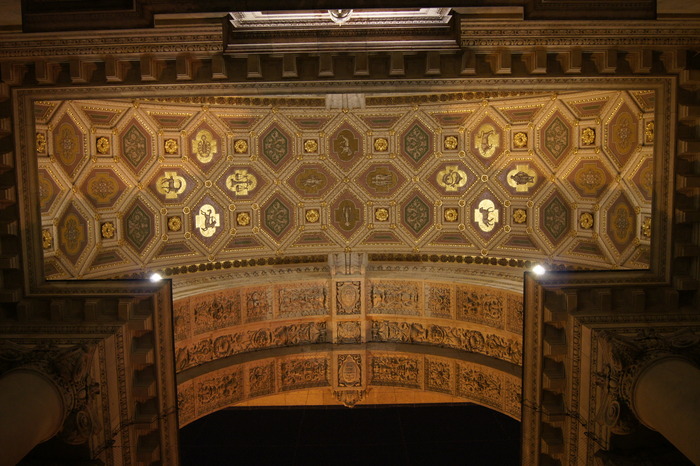
Not to mention the traditional Christian decor of the entryway. Holy astrological symbols, Batman!
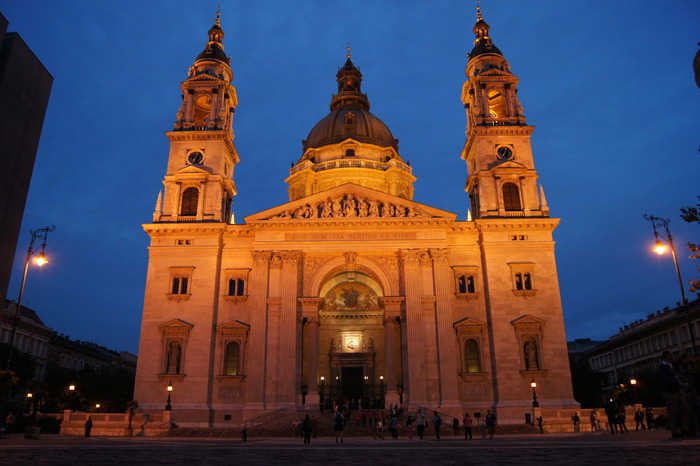
Saint Stephen's Basilica in twilight lighting.
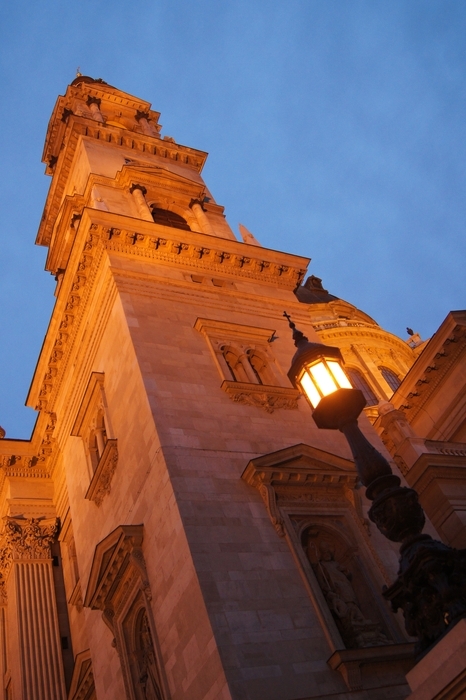
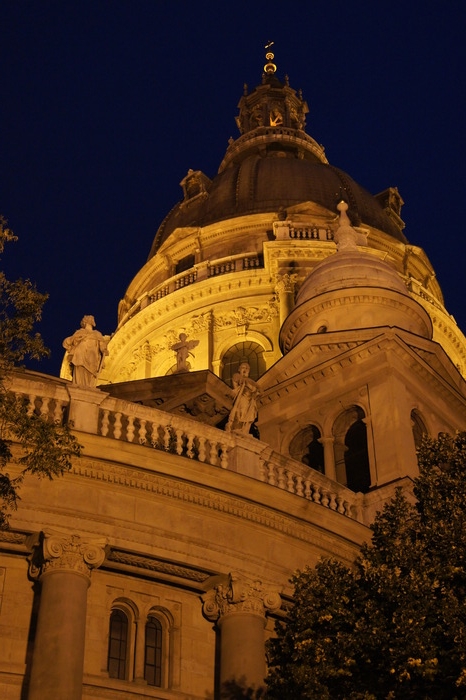
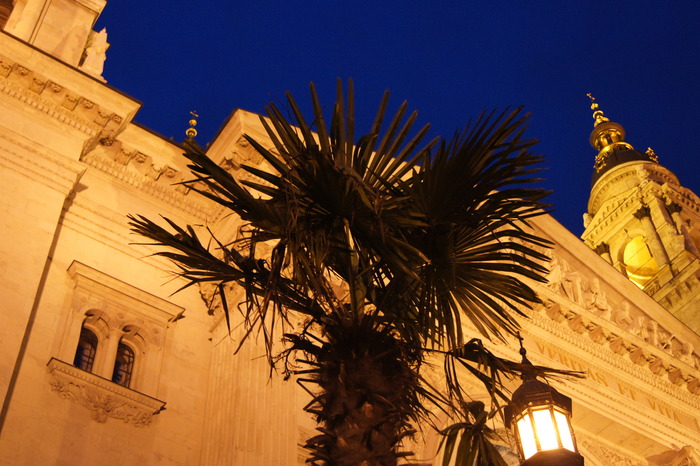
A recent visit to the Escher Museum has given me a new affection for palm leaves. In the museum there is a sketch of a palm with the guide lines still drawn around it. It shows that Escher drew the palm to be geometrically perfect... inspired by, but much more symmetrical than, the real thing. This one's not bad.
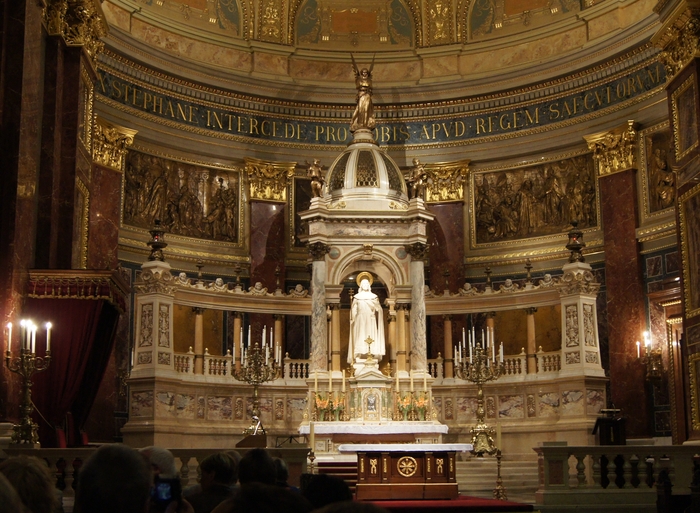
Saint Stephen will remain
All he's lost he shall regain
Seashore washed by the suds and the foam
Been there so long he's got to calling it home
Almost certainly a different Saint Stephen. This one has no rose, but instead a globe with a patriarchial cross. King Stephen brought Christianity to the Magyars, a bloody but likely very savvy political and economic decision.
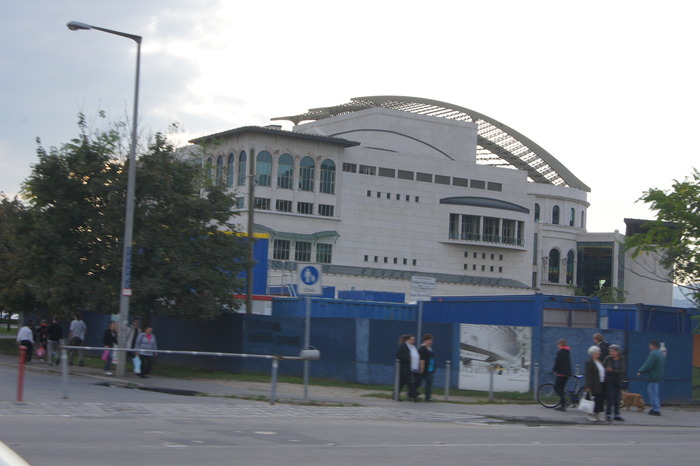
Irrefutable evidence that not all new construction has to be hideous.
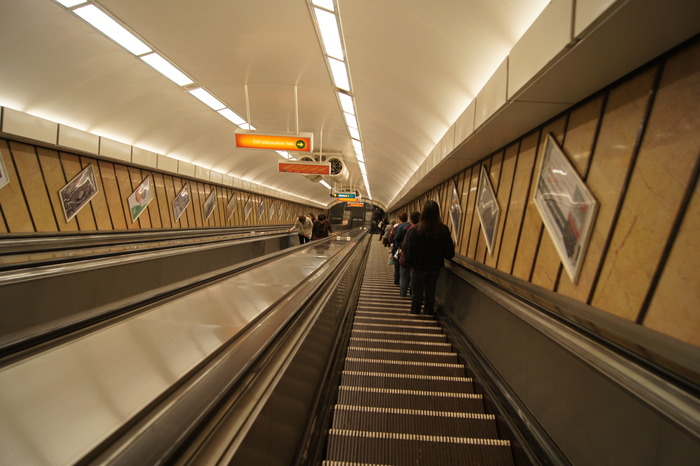
Budapest has the oldest underground system in the world, with the exception of the London tube system. A peculiarity is that it goes VERY deep underground.
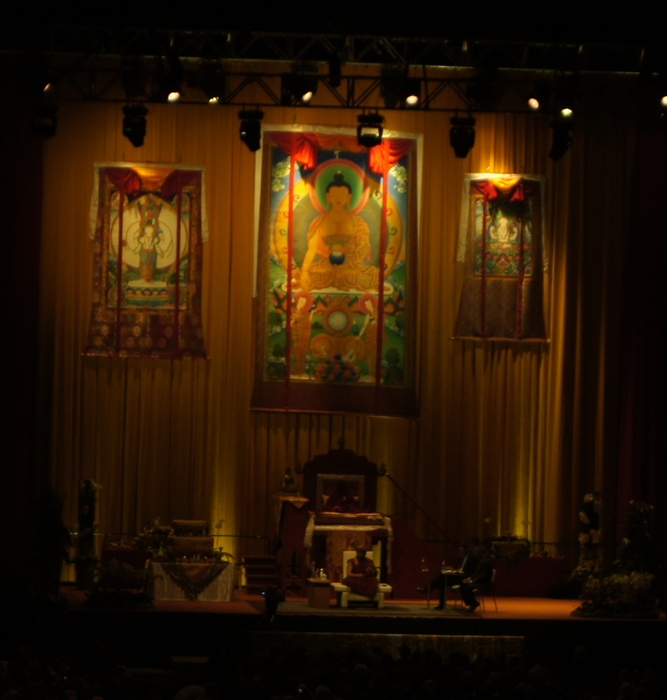
The afternoon of the second day, the Dalai Lama spoke on secular topics... thus not speaking as the leader of Tibetan Buddhism, but as a simple monk who has done a lot of traveling. He spoke from some cushions on the floor, and had the rather charming habit of wiggling his feet when he got excited about something. Mostly he spoke in English, but the audience was largely Hungarian, and so there was a translator. Sometimes he would speak in Tibetan, so there was also an English translator. He would speak for ten to fifteen minutes, then let the translator(s) do their thing. Since Tibetan sounds like chanting bees and Hungarian seems to be a descendant of Martian, the effect was that there was a lot of time for reflection on what he had said.
A topic which he returned to frequently is that the seat of morality is in the individual, and that all major religions are teaching the same basic lessons. He used the example of the Buddhist notion of loss of the self. In Christianity and other theistic traditions, one is asked to recognize your own smallness in comparison to god. In Buddhism, you are asked to recognize your own smallness in comparison to the universe. People ask, said the Dalai Lama, how you can say there is one truth, when there are many religions all saying there is one truth? This is simple, he said. There are many people. For one person, there is one truth. For many people, there are many truths. Seeming contradiction. No contradiction.
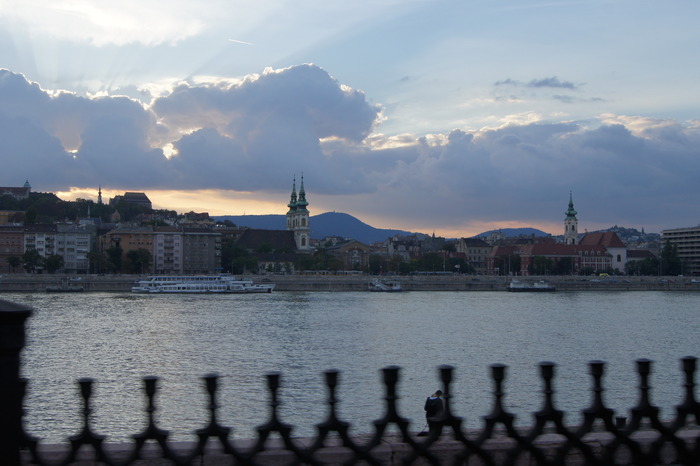
Buda at sunset
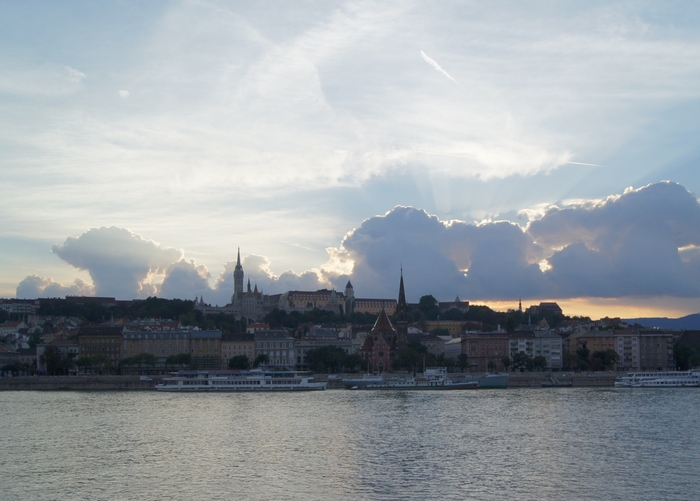
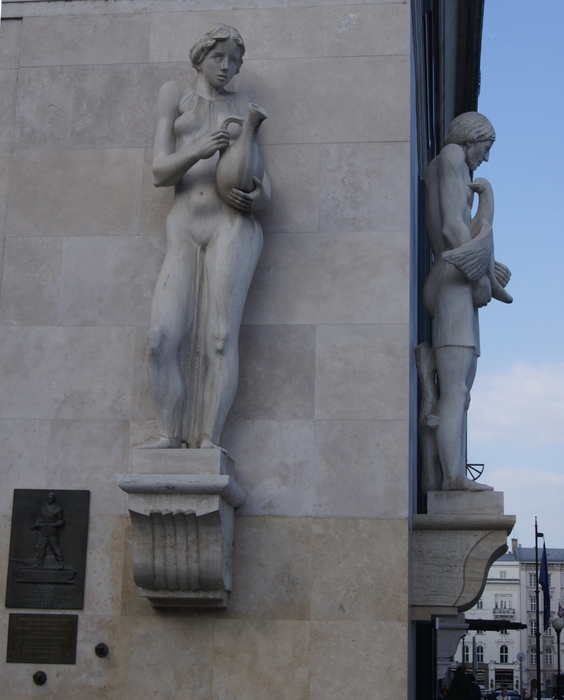
Peculiar statuary on one of the Pest buildings... What *is* that guy doing with the goose?
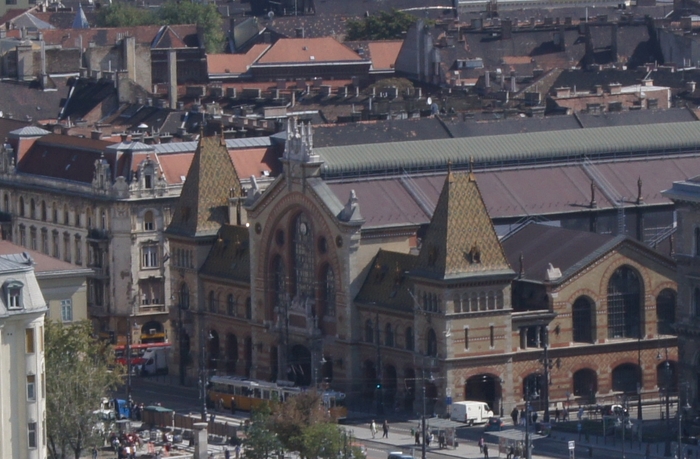
One of our hobbies when we go to a strange city is visiting the markets there. Budapest has the Great Market Hall, built in 1896 in the style of the markets of Paris. The brightly patterned roof is made of Zsolnay tiles, a well-known ceramics company of turn-of-the-century Hungary.
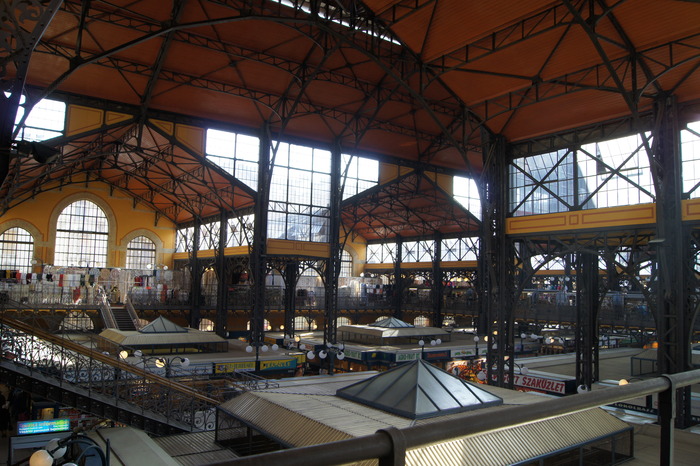
Inside the Great Market Hall.
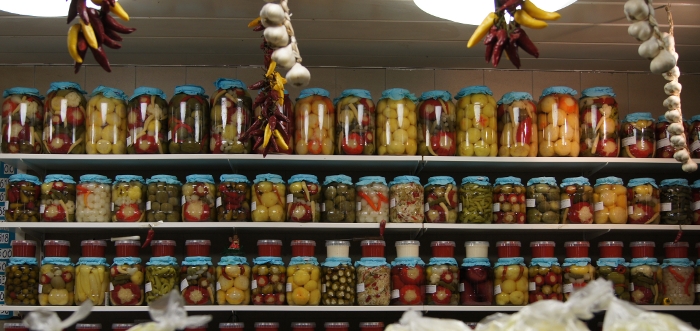
Apparently the locals are fond of pickled things.
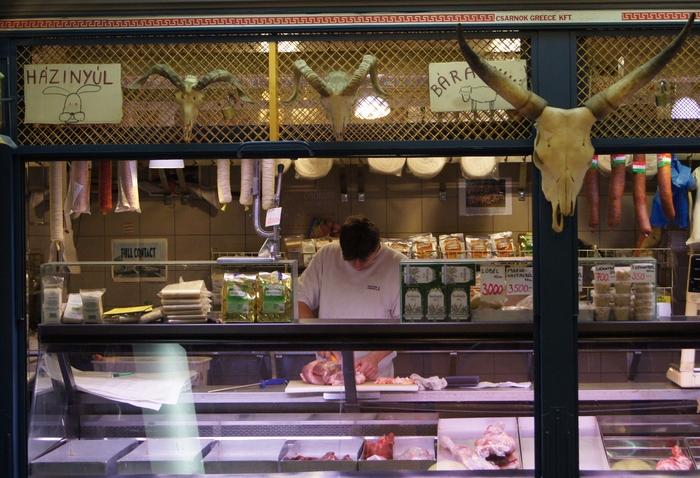
And, apparently, also fond of truth in advertising. Note that this butcher shop features several skulls and a hand-drawn hare and sheep. Skulls were popular decor for all the butcher shops in the Great Market, and one also featured a bear skin (although as far as I could tell, no longer offered bear meat).
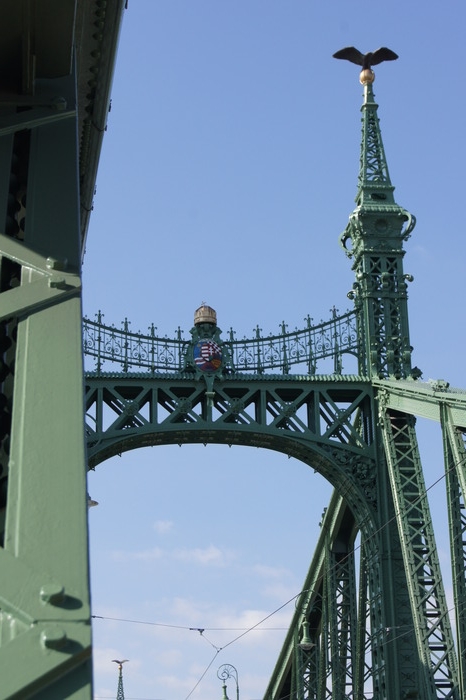
Each of the bridges crossing the Danube in Budapest are works of art as well as engineering. This one is the Liberty Bridge. No, it's not an American flag on the top - although the raptors (falcons in this case) and red, white, and blue are certainly evocative - but is the coat of arms of Hungary.
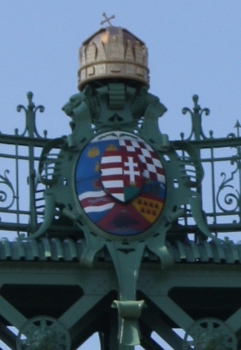
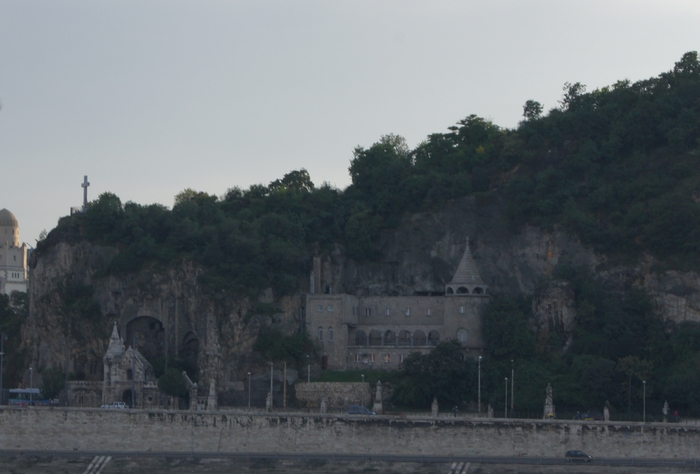
One of Budapest's landmarks is the Cave Church, founded by Saint Istvan in a natural cave, and later expanded.
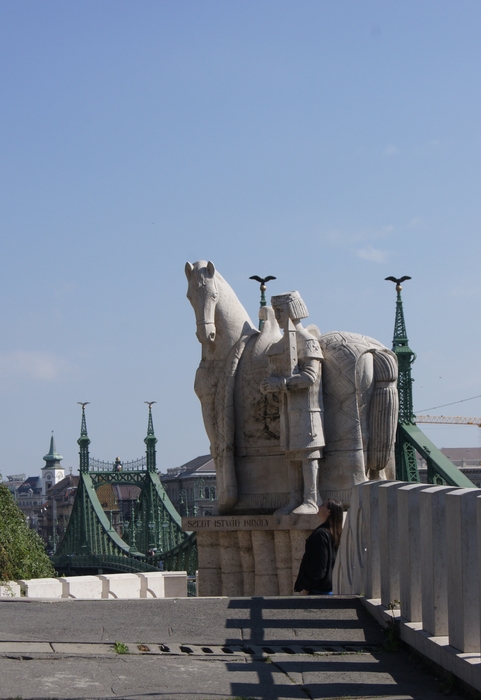
Eric by the statue of Saint Istavan, with the Liberty Bridge in the background.
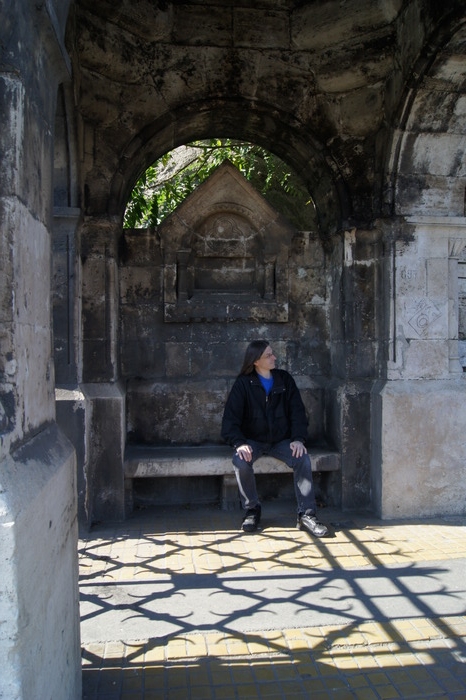
Eric resting on one of the benches in front of the Cave Church and the Citadel.
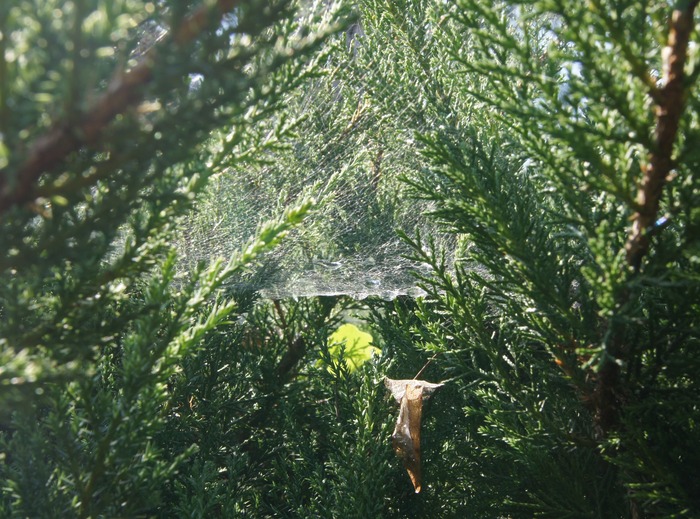
Spider webs in the bushes outside the church.
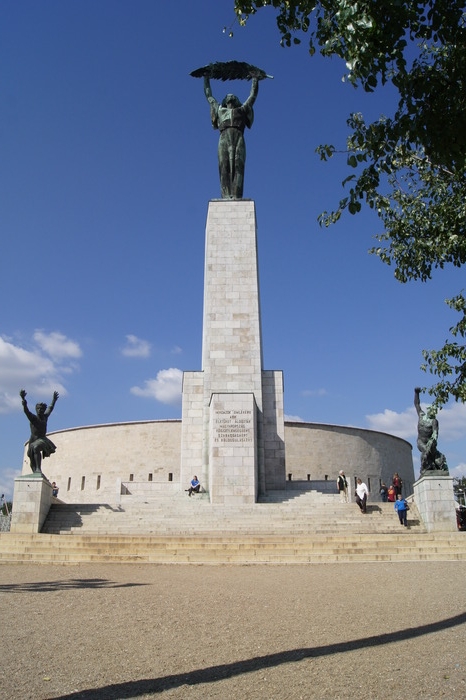
At the top of Gellert Hill is the Citadella, its Eastern side decorated with the Liberty Statue. The Liberty Statue was originally erected in gratitude when the Soviets drove the Nazis out of the city. However, over the next fifteen years, the disinclination of the Soviets to leave and let the Hungarians return to their previous style and standard of living resulted in considerably less goodwill than at the time of the statues construction. When Hungary regained its independence in 1989, the statue was rededicated to all those who have given their lives in the fight for freedom.
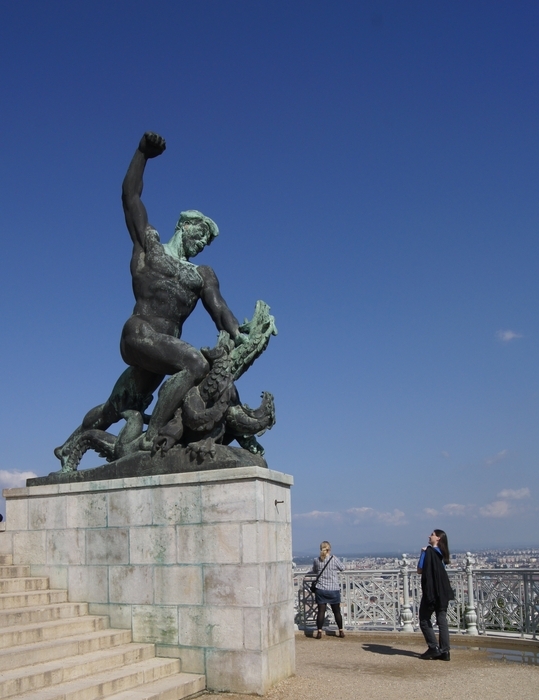
This one, apparently, represents the fight against evil.
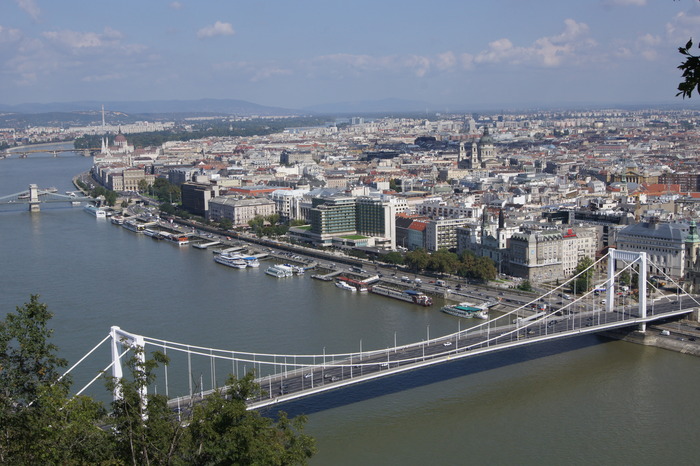
The view of Pest from the top of the Citadella. The Margaret Bridge (furthest), Chain Bridge, and Elizabeth Bridge crossing the Danube. The Parliment building is the neo-Gothic building on the Danube shore. The same height as the Parliment building, about 2/3 of the way across the photo, is the Saint Stephen's Basilica of the earlier photos.
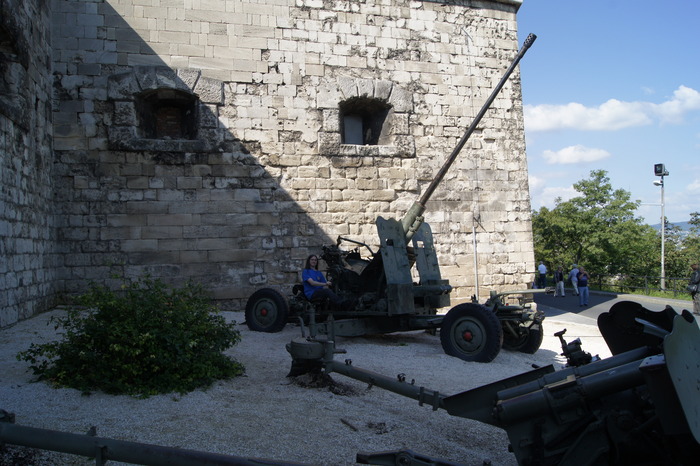
One of the really cool things about the Citadella was the display of defunct Soviet artillery... which you could play with.
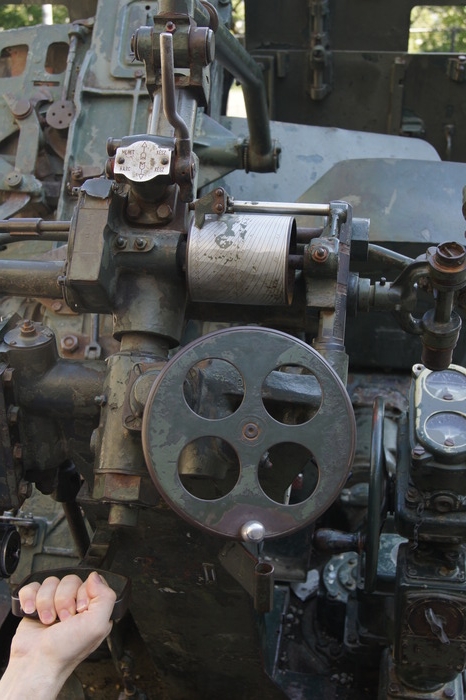
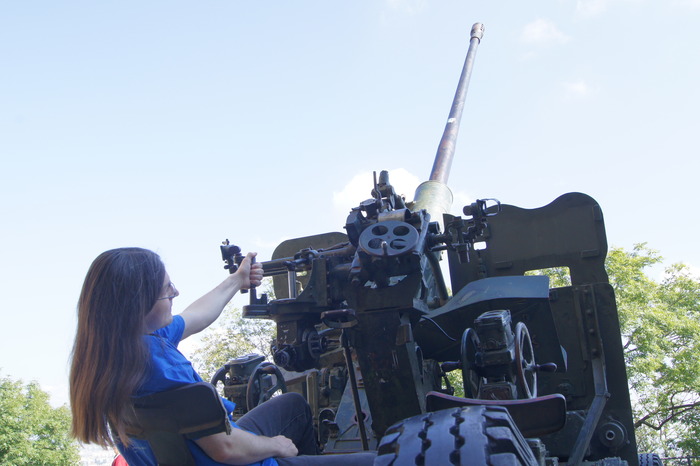
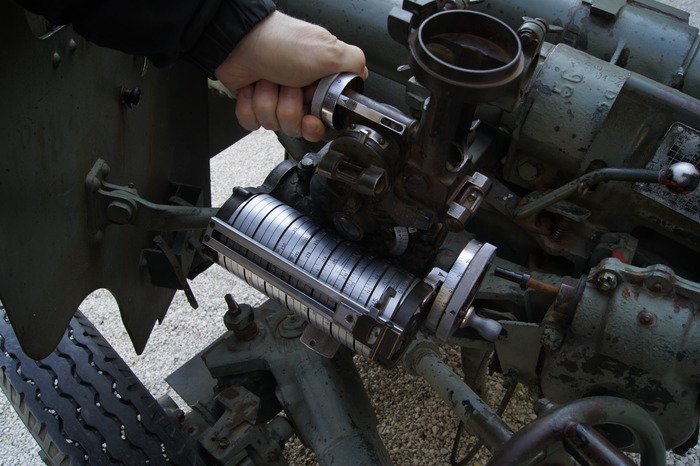
The knobs still turned, although they had disconnected the mechanism from the barrel.
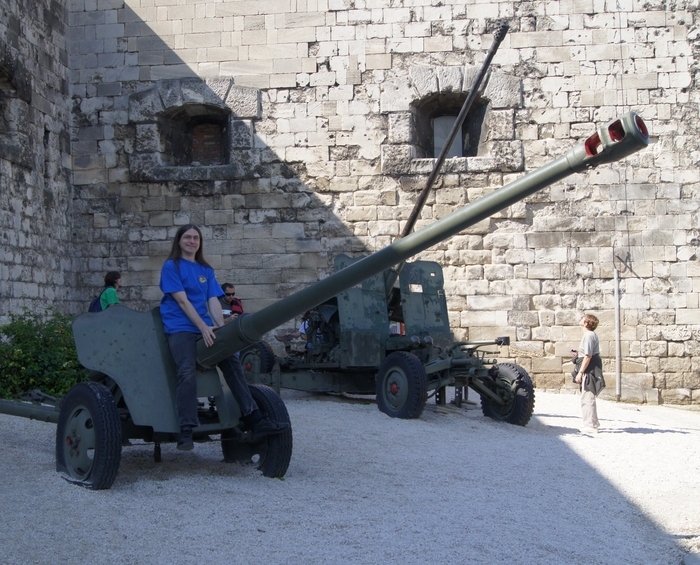
The obligatory phallic photo.
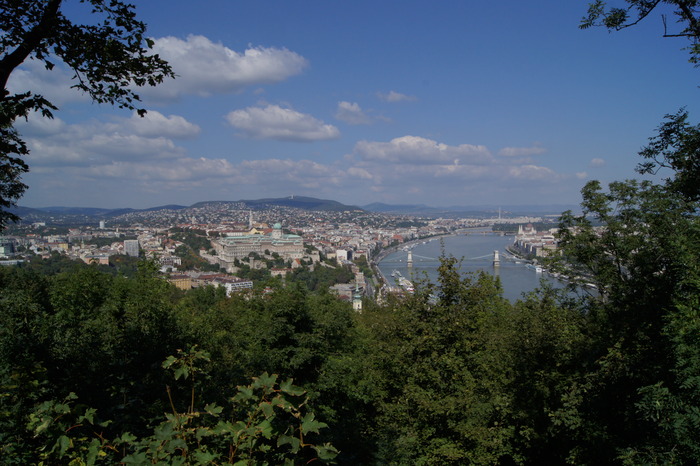
Buda and Pest.
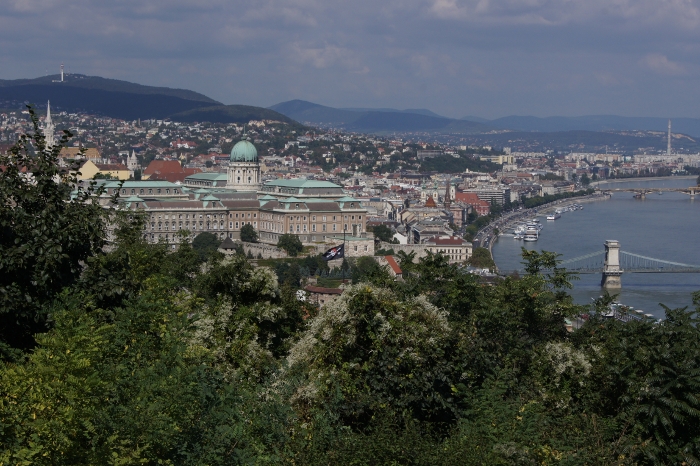
The green-roofed building is Buda Castle, first built in 1265, and last rebuilt in the 1960's under Soviet rule. The castle had been all but leveled in the second world war, when the Axis used it as a military base. In its long history it had been leveled by war and rebuilt twice before. After the second world war, archaeologists recovered a large section of the medieval palace which had been buried by the previous cycles of demolition, but as recently as 2007 a section of the 15th century castle wall which had been recovered was demolished to make way for a parking garage.
None of this explains why there is a pirate flag flying in the lower-center of this picture.
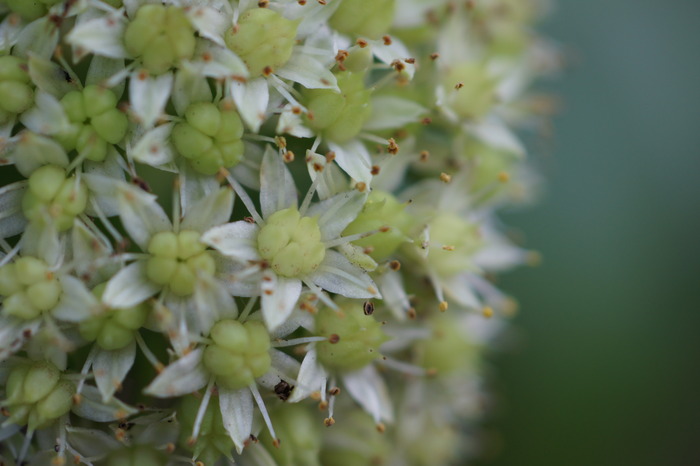
We took the back way down from the Citadella, taking a gentle switchback trail through a lightly forested park.
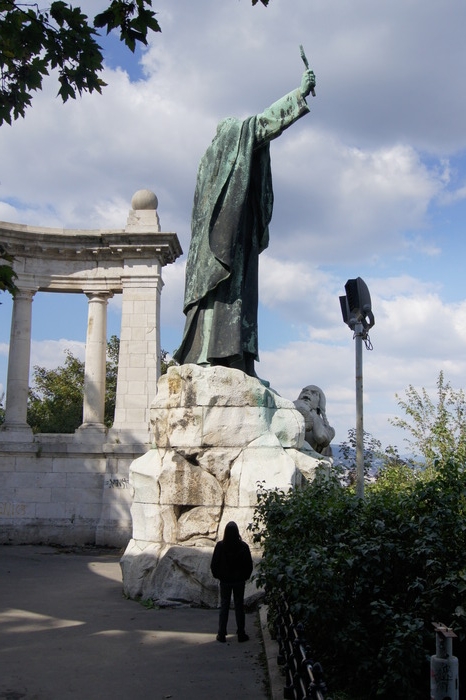
One of the switchbacks brings this unexpected sight. It looks for all the world like a Greek or Roman temple commemorating the smack-down of some willful climber, but it is meant to be Saint Gellért who converted the Magyars to Christianity in the 11th century. The exact means which he employed are not recorded, but it is rumored that a number of those unwilling to be converted bundled him in a barrel and sent him rolling to his death down this very spot on the hill.
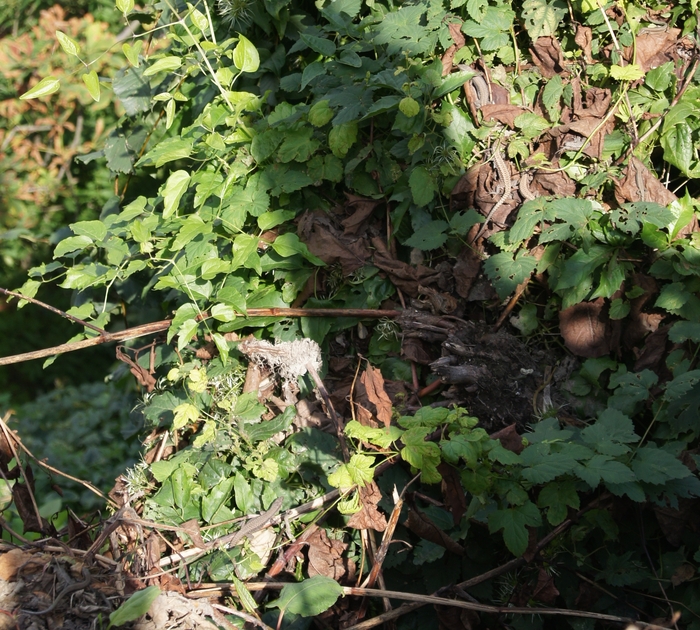
A look over the railing near the statue reveals another unexpected sight. Count the lizards if you can...

I think these are Podarcis muralis or the common wall lizard... in part because common wall lizards are common, at least in eastern Europe and Asia, and in part because of the line of blue spots on the side. This one also has a stinkbug ambling away by the lizard's tail.
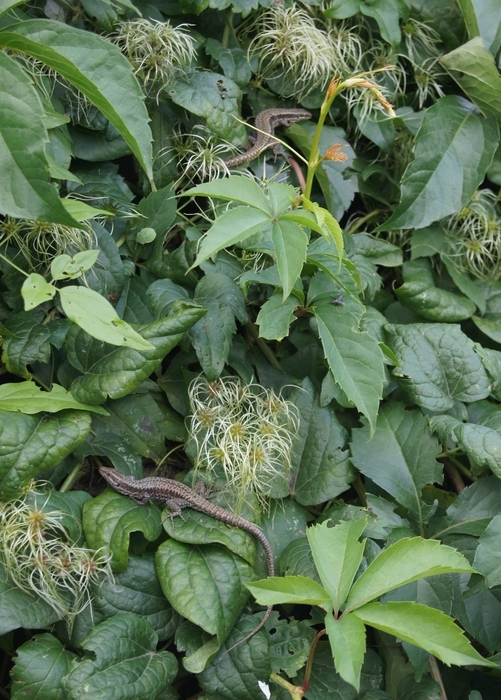
A second lizard joins the picture.

A closer look at the weeds where the lizards were hanging out.
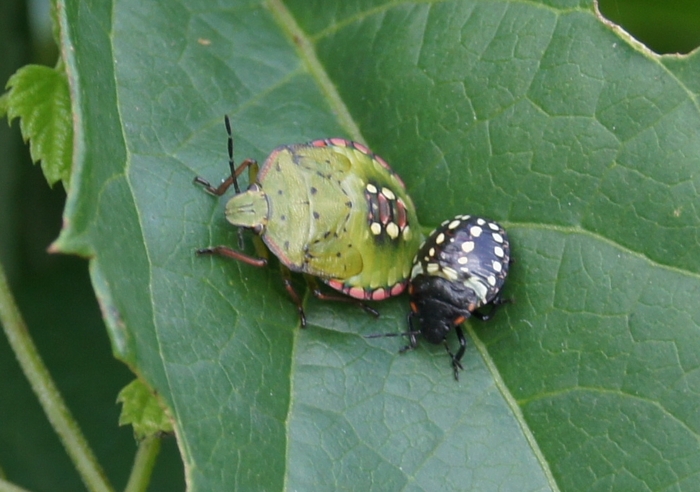
Bugs
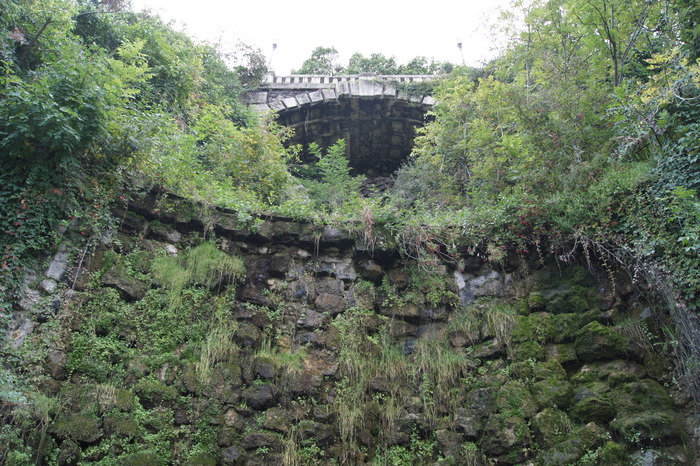
The Gellért statue was constructed with an artificial waterfall.
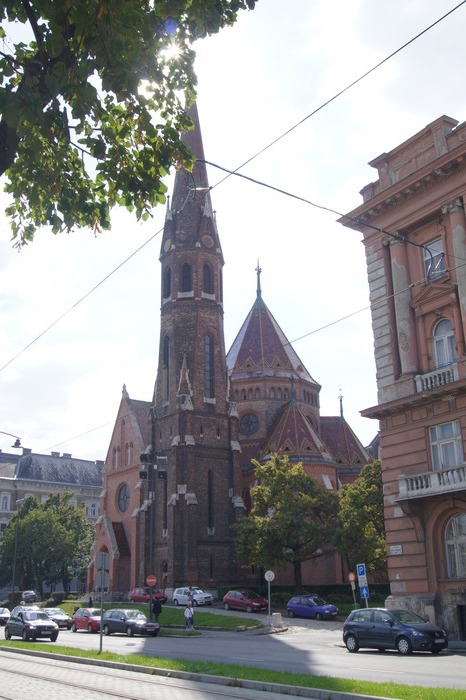
Szilagyi Dezso, or Hungarian Reformed Church. Possibly the ugliest church in Budapest.
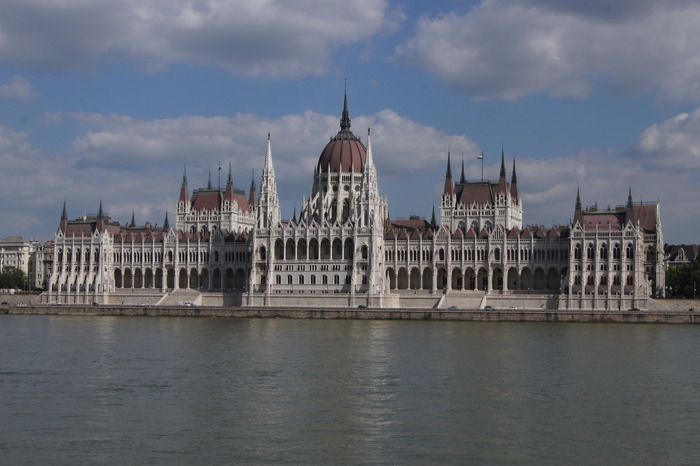
The Hungarian Parliment building, over the Danube.
Perhaps the best story of the trip comes on the way back from Budapest. Hungary is known for its wines (who knew?) so we bought a bottle in the airport on the way back, so we could bring it home without having to check any luggage. When we arrived back in Amsterdam we were surprised to find that there was a long line to be checked through the xray machine. There were also a big pile of bottles from the duty free shop. Our bag, like the others, was just wrapped up and not sealed. Sure enough, we we got to the front of the line they told us that we could not take our bottle with us. We explained that we were just going home, so there was no need for us to go back through security. We would be perfectly happy to just be given a way out of the airport that did not involve passing through the clean
zone. The guy in front of us had also lost a bottle, and stopped and waited to hear the discussion. We suggested that they get someone from security to escort the group of us out of the airport, with our bottles. The security lady said no, but was willing to call her supervisor. Her supervisor called someone else, and meanwhile another couple joined our little band. The supervisor came out and explained that the problem was that the security in Budapest is not considered good enough (I'm sure you can tell from the photos that it's a hotbed of anarchy...), and that there are two companies doing security at Schiphol, and that the company who does security inside the airport absolutely would not allow it. But they had called the supervisor of both companies, and someone would escort all of us to baggage claim. We gathered up our bottles, and the supervisor walked us out of the airport. On the way out, one of the Dutch guys asked us if we would have done the same in the US. Not a chance,
Eric answered without hesitation. But here there is still the sense that you won't get punished for asking a reasonable question, and often they'll even find a way to let reason prevail. We thanked the supervisor profusely, and then left to toast our small victory.